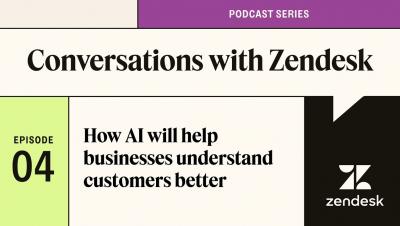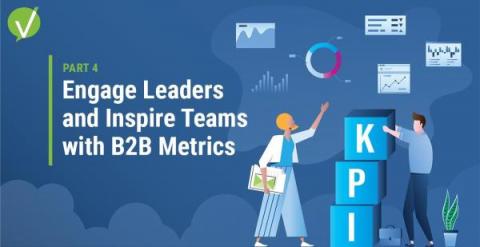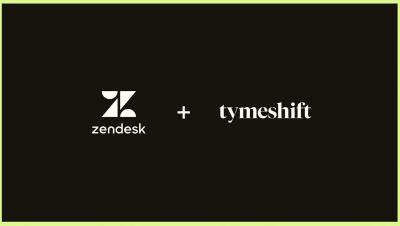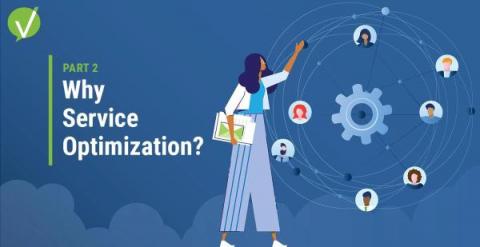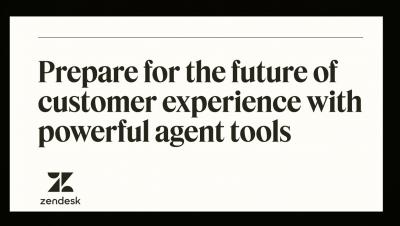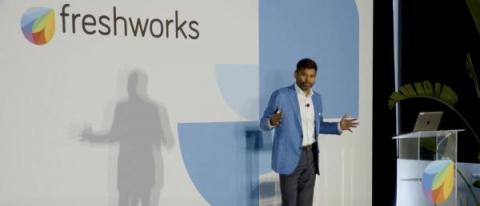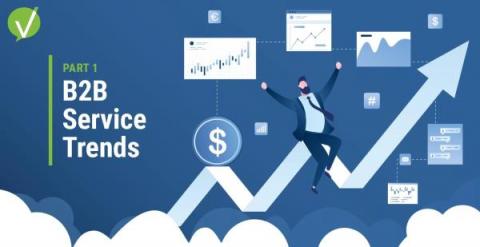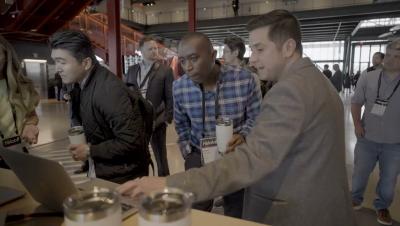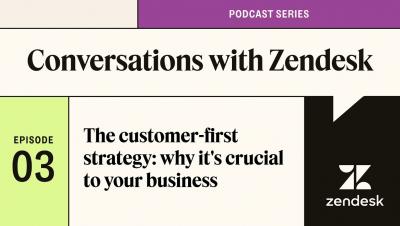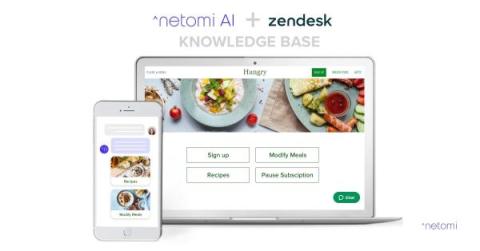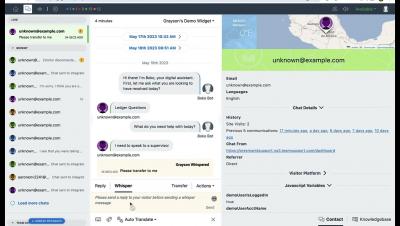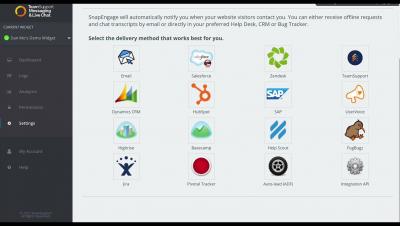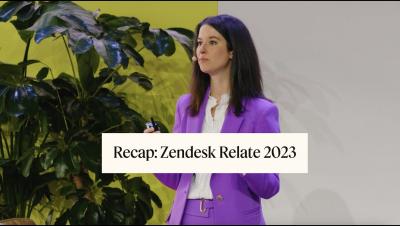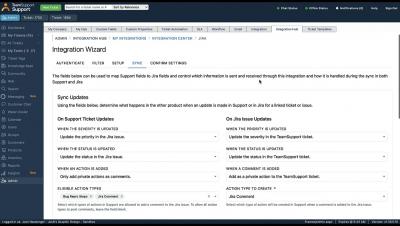Teams | Collaboration | Customer Service | Project Management
June 2023
CSAT Score: Everything You Need To Know About Customer Satisfaction Scores (Updated March 2022)
Editor’s Note: The CSAT Score article was originally written on March 27th, 2022 and was most recently updated for relevance and clarity on June 30th, 2023. Every company wants to grow. The easiest way to do that is to keep your existing customers. To retain customers, you need to make them happy. Happy customers turn into long-term and profitable loyalists. And in short, long-term and profitable loyalists go a long way toward improving your CSAT score.
The 13 Best Help Desk and Service Desk Software Platforms In 2024 [Features, Pricing, and More]
The support tech stack has undergone a significant shift since the early 2000s. The backbone of a support organization today is having one of the best help desk software solutions. In today’s business environment, help desk software is a powerful platform that streamlines the entire support process. In this post, we’re going to dive deep into these solutions.
How Customer Expectations Are Related To Customer Satisfaction
Does your customer service software help you measure customer expectations? Understanding the relationship between customer expectations and customer satisfaction is crucial to business success. Companies must grasp, understand, and manage customer expectations effectively in order to deliver experiences that meet or exceed them. When they do, businesses can use that momentum to enhance customer satisfaction, build stronger customer relationships, and drive business success.
Freshworks brings generative AI to the Fortune 5 million
During Freshworks’ Q2 ’23 Launch Event on June 22, we unveiled new product features that can bring the power of generative AI to businesses of any size. Access to AI is necessary for these new tools to have lasting business impact. The market for generative AI is expected to reach $36 billion by 2028, a tenfold jump in five years. “AI is just not a buzzword anymore,” Freshworks founder and CEO Girish Mathrubootham explained to Diginomica.
Engage Leaders and Inspire Teams with B2B Customer Experience Metrics
Welcome back to the fourth installment in our ten-part series covering The Complete Guide to Customer Service Transformation. We’ve established the financial implications of Service Optimization, and now we’ll explore how to engage your organization’s leadership and inspire your teams to share in this vision. Regardless of your position within an enterprise, securing the support of your team, colleagues, and leadership is crucial to the success of your initiative.
How AI Can Cut Costs in Manufacturing
Elevating Service: Top 6 Customer Service Training Software
This comprehensive guide explores the top six customer service training software platforms of 2023, their unique features, and how they can help your team enhance their problem-solving skills, professionalism, and understanding of your business. Discover how software to monitor remote work like Insightful can assist in identifying training needs and evaluating training effectiveness.
Turbocharge your CX with Zendesk and AWS
The pandemic dealt some heavy blows to the retail industry. Lockdowns, short tempers and supply chain issues were just a few of the challenges that business owners have faced over the past three years. But retailers who got creative – and engaged with their customers in new and innovative ways – surged past the competition. Learn how to boost your retail CX with Zendesk and AWS.
Maximizing Returns - Quantifying the ROI of Superior Customer Service
After a detailed review of Service Optimization in the previous post, part three shifts our focus towards understanding the tangible return on investment (ROI) of improved customer service. Businesses investing time, money, and resources into customer service transformation should have a clear understanding of the potential return on investment (ROI). Fortunately, there is plenty of data demonstrating the value of investing in customer experience (CX).
The Ultimate Guide to Continual Service Improvement
How AI infused immersive CX can help retailers win the battle for customer loyalty
The money in our wallets doesn’t go as far as it used to. Prices are increasing—the cost of low fat milk was around forty five per cent cheaper in December 2021 than today. Meanwhile, the phenomenon of ‘shrinkflation’, a form of hidden inflation, means we’re all paying more and getting less in return. Companies across the board, from small independent businesses right up to the biggest retailers in the country, are finding it hard too.
Deep learning vs. machine learning: what's the difference?
Understanding the latest advancements in artificial intelligence (AI) can seem overwhelming, but if it’s learning the basics that you’re interested in, you can boil many AI innovations down to two concepts: machine learning and deep learning. Examples of machine learning and deep learning are everywhere. It’s what makes self-driving cars a reality, how Netflix knows which show you’ll want to watch next and how Facebook recognises whose face is in a photo.
Shaping the future of intelligent CX with Zendesk AI
The world is changing and customer experience is shifting alongside. Advances in technology, combined with new and ongoing business challenges, put us all under pressure to continue to evolve, improve and do more for our customers. Many businesses have managed through supply chain disruptions, rising costs and the ongoing shift into the digital landscape – all while under a cloud layer of ongoing economic uncertainty. Companies are faced with tightening margins and cutting costs.
Tymeshift seamless workforce management, now in Zendesk
How AI is boosting agent intelligence - and evolving the CX team
Despite the hype, AI isn’t here to replace your human agents. On the contrary, when human agents and AI join forces, they form a powerful CX team – one that builds on their strengths, while minimising their weaknesses. Your agents shouldn’t be bogged down by busy work. With AI in their corner, they can instead focus on the tasks that make a difference. Which results in a better experience for all involved.
Unlocking the Power of 'Service Optimization' in B2B Enterprises
Welcome back to our ten-part blog series on Customer Service Transformation. In our previous blog post, we examined the evolving topic of B2B service trends. Today, we continue to draw further insights from chapter two of the Vivantio eBook, The Complete Guide to Customer Service Transformation – where we explore the cornerstone of this transformation – Service Optimization.
Prepare for the future of CX with powerful agent tools
Unified experiences, supercharged with AI
Building software that delivers value to customers comes naturally to us at Freshworks. Sometimes, it also comes “artificially”—such as through innovations in artificial intelligence, including generative AI. Businesses around the world are already realizing the transformative potential of generative AI through automation and productivity-enhancing tools.
How tech companies are using AI to control costs in 'year of efficiency'
In response to macroeconomic pressure, technology companies of all sizes have been tightening their belts and flattening their org structures. Meta CEO Mark Zuckerberg has called it the “year of efficiency”, while others are calling it the “end of the tech boom”. But despite budget challenges, tech companies have reason to hope.
How to cut retail customer service costs with artificial intelligence
The digital transformation in retail has fundamentally changed the way the entire industry operates. From supply chain management to predictive analytics, it has increased speed and efficiency across all areas of the retail business. In today’s hyper-competitive environment, agility is critical to attracting and keeping customers. Shoppers know they have choices and retailers who aim to keep their business from walking out the door need to put customers at the centre.
How manufacturers can cut service costs with AI and automation
It’s fair to say the manufacturing industry is on the fast track to digital transformation. The pandemic exposed the fragility of our global supply chains, resulting in empty shelves and overstocked warehouses. Meanwhile, as the pandemic subsides, inflation is driving up the cost of goods and logistics, putting the squeeze on companies still recovering from the past few years. So it’s no surprise that manufacturers are looking for ways to cut costs whilst still maintaining quality.
Customer Service Transformation: Embracing the B2B Service-Driven Era
Welcome to the first in a series of ten blog posts, drawing insights from the Vivantio eBook, The Complete Guide to Customer Service Transformation. We kick off the series discussing the evolution of B2B service trends, a shift that has significantly altered the conventional business landscape. In an era of digital dominance, labelling a business as a “service business” is becoming an obsolete distinction.
A Thriving CX In Turbulent Economic Times: 5 Best Practices
In today's turbulent economy, businesses across the nation are grappling with challenges such as reduced staff, hiring freezes, and budget cuts. In fact, 91% of CEO’s firmly believe we are on an imminent path towards a long lasting recession. Compounding these hurdles is the fact that providing excellent customer support is facing its own set of challenges.
Harness the power of AI
The new frontier in finserv: immersive CX with conversational AI
Article originally published in the Altfi report, jointly sponsored by Zendesk. The landscape of customer service has never looked more different, shaped by shifting consumer behaviour and expectations that have rapidly changed over the past two years, driven in turn by the shocks and aftershocks of the pandemic, economic uncertainties, and ever evolving technology trends. Consumers’ voices are growing louder, and bolder, and what customers want is clear: immersive customer experiences.
New standard in CX-measuring customer emotions
Take a moment and think about your latest purchasing experiences. Can you recall buying a product impulsively because of excitement? Or can you remember leaving a store because of a bad experience? What was the main driver of your decisions? Harvard Business Study shows that ninety-five per cent of purchase decisions are emotional. The traditional Customer Experience (CX) metrics like NPS, CSAT, and CES only measure loyalty, service quality, and functionality.
The 5 Top Customer Centricity Examples in 2024
Editor’s Note: The Top Customer Centricity Examples article was originally written on July 19th, 2022 and was most recently updated for relevance and clarity on November 22nd, 2023.
The Customer-first Strategy: Why it's Crucial to your Business I Conversations with Zendesk Podcast
What is Employee Engagement? (+5 strategies for improving it) #ytshorts
How to stay agile with Zendesk AI
Navigating the Path to B2B Customer Service Excellence
We’re excited to introduce our upcoming blog series: “Navigating the Path to Customer Service Excellence,” which is a review of the Vivantio eBook The Complete Guide to Customer Service Transformation. Over the next five weeks, we’ll be diving into a pivotal component of B2B success—putting customers at the very core of your business operations.
Remove repetitive tasks with AI
How to Maximize Your Zendesk Knowledge Base with AI (Updated for January 2024)
The modern customer wants self-service. That’s why, over the past few years, we’ve seen companies build out robust Knowledge Bases (or Help Centers) on Zendesk and other leading customer experience platforms. Zendesk Knowledge Base solutions are team publishing libraries covering recurring topics and questions on products and services. Another way that companies provide self-serve support options is by launching customer service chatbots.
Zendesk for Financial Services #ytshorts
How to control customer service costs and save time
Welcome to Showcase: where we shine a light on the intelligent heart of customer experience
Customer experience is now shaping the way companies across the world do business. We’ve seen companies thrive based on their ability to listen to their customers’ needs and keep up with the latest trends. The latest developments in artificial intelligence (AI) provide a bounty of opportunities and possibilities for businesses to rise to the challenge, and deliver seamless, personalised, and immersive experiences for their consumers.
Top 8 change management models: a comparison guide
With how fast industries move, technologies advance and current events shift, organisational change is now a normal part of doing business. But change is rarely easy. And the bigger and more complex a business is, the more challenging it is to implement change effectively. Yet the ability to incorporate necessary changes into how you do business plays a direct role in long-term success.
Community tip: how to set a reminder on a ticket
It’s great to be able to put a ticket on hold but I’m sure you’ve suffered when tickets have stayed like that for too long. Sure, you could create an automation to change the state back to being open after X amount of days but life is never as simple as there being a constant value for X. And perhaps you don’t want to actually change the status – you just want to be reminded that the ticket is there.
Supervisor View in Messaging & Live Chat
TeamSupport Legacy Chat VS. The New and Improved Messaging & Live Chat
Auto Translate in Messaging and Live Chat
Messaging and Live Chat Integrations
Generate Conversational AI Personality | Webinar
Zendesk CX Moment with Mizuno
How will AI impact customer service?
The role of AI in self-service and knowledge management I Conversations with Zendesk Podcast
Top Zendesk features you don't want to miss
Support Ticket Lifecycle: How To Take Control
Support tickets are the primary way that users communicate incidents and problems. This is why it is important for businesses to understand the support ticket lifecycle, as well as the interventions and tools that can speed up the resolution process. To help businesses understand how they can improve, we are going to cover.


